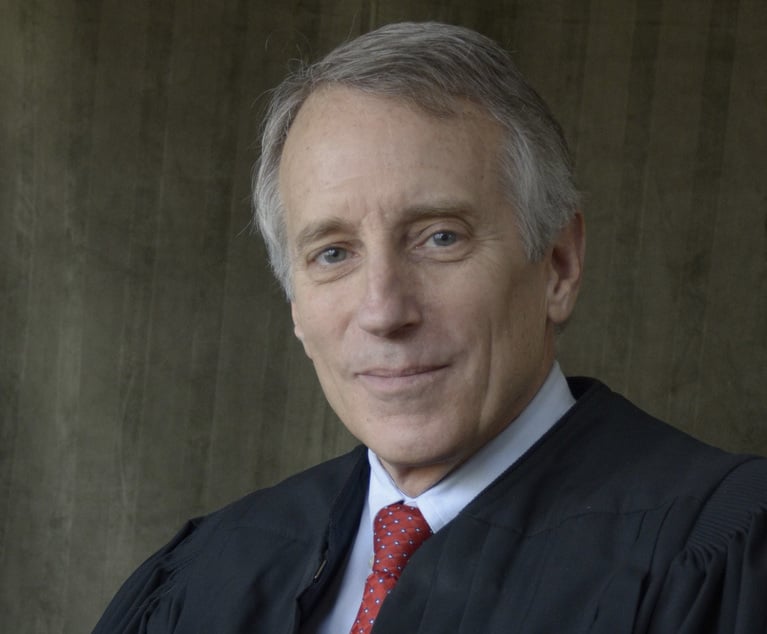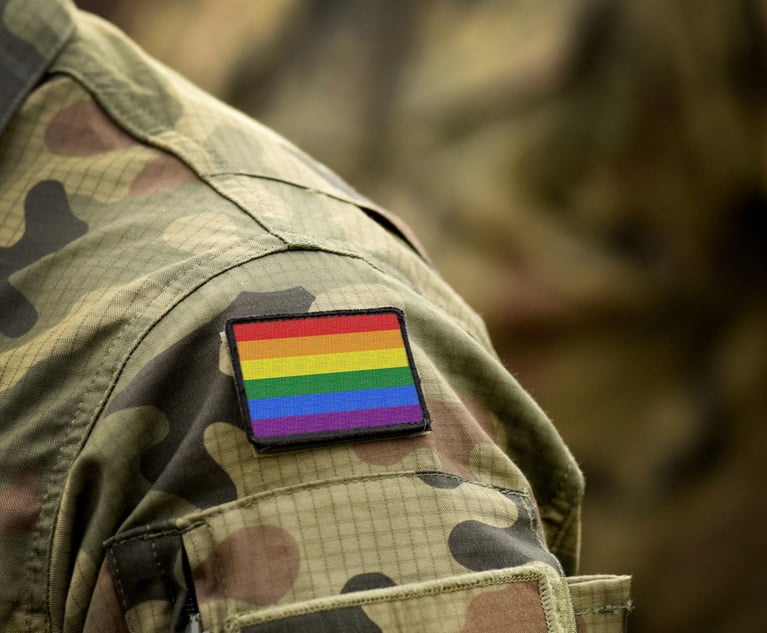At Elite Law Reviews, Diversity Efforts May Be Paying Off
Recent diversity efforts might be paying off as more students of color take the helm at prestigious law reviews
March 29, 2018 at 02:50 PM
8 minute read
 University of Michigan Law School.
University of Michigan Law School.
In the past few years, some of the country's most elite law reviews have elected students of color as editors-in-chief, a signal that yearslong diversity efforts might finally be paying off.
Historically speaking, law reviews have struggled to represent students of color and women equally among their editors—jobs that can open doors to prestigious judicial clerkships and Big Law employment. It's been even harder for underrepresented students to win the coveted editor-in-chief role, as statistically, leadership posts at law reviews have overrepresented white male law students.
Are the times changing?
Incoming Harvard Law Review president Michael Thomas has become the second black law student in two years to win the publication's top job. His predecessor, ImeIme Umana, accomplished an important “first” by becoming the first black woman president ever in the publication's 130-year history. (President Barack Obama was elected the first black editor of the HLR in 1990.)
More recently, Megan Brown became the very first black editor-in-chief of Michigan Law Review in its 116 years. And in 2015, Kendra Sandidge became the first black woman editor-in-chief of the University of Pennsylvania Law Review.
For Brown, it was influential to see Umana become Harvard Law Review's top editor.
“That wasn't just a Harvard thing: It was an everywhere thing. We all knew about it,” Brown said. “It's horizon-expanding to see someone like you achieve your goals.”
She said she hopes the trend continues for law reviews to diversify their leadership.
“I think it's generational. I think people around me and other schools just sort of see that race isn't a barrier to success,” Brown said. “Maybe there's a little less implicit bias in our generation.”
The elections of these students of color might have grown out of an ongoing trend nationally for law reviews to focus on diversity, aiming to increase the numbers of women and minority editors.
“This is a very big deal, and it should be celebrated,” said Adriane Peralta, who studied the issue and penned a 2015 legal article about the dearth of women of color in law review leadership. Peralta, now an associate in Sidley Austin in Los Angeles who practices commercial litigation, noted that when she attended the University of California, Los Angeles School of Law, serving as an editor of UCLA Law Review starting in 2012, the publication for the first time was forming an internal diversity committee. It had modeled the initiative from other top-15 law schools.
“These things take time: Even if you initiate a diversity committee in 2012, you may not see the benefits, really, until six, eight, 10 years down the road, when the processes become more institutionalized in the organization,” Peralta said. “If we're seeing more people of color ascend to the top as EIC [editor-in-chief] of top law schools, then it's fantastic.”
The significance: It sends a huge signal to other law students of color that they can win membership on law review and be successful.
“If you are a person of color and only see white faces on the law review, it can be very discouraging,” she said.
Law reviews might suffer from a lack of diversity because of their selection processes, said Kent Lollis, director of diversity initiatives at the Law School Admission Council. Admission to law review is an honor reserved for the top students based largely on their grades during their first year of law school.
“That group tends to be less diverse than the rest of the class,” Lollis noted. “The numbers of women and minorities on law review do not reflect the percentages in the class as a whole.”
Students can also win membership through a writing competition, but it's tedious and difficult, draining many law students of the motivation to compete, Lollis said.
Law schools have grown concerned about the lack of diversity on law reviews, because they want to open all their students to the best employment opportunities, he said.
“A lot of legal employers in law firms look at law review participation as a major criteria for employment because students who participate in journals and law reviews have a lot more writing experience and editing experience than the student body as a whole,” he said.
The publication also wins.
“There's more and more recognition in the field that having diversity in what you publish and the membership really does make for a better journal,” said Kimberly Wang, who in 2017 became the first diversity editor at Northwestern University Law Review.
Research from five years ago explains why law reviews must focus more on diversifying their leadership ranks.
Back in 2012, just 15 percent of law review editors-in-chief were minorities, according to a 2013 law review diversity report by New York Law School Law Review and Ms. JD, a nonprofit. Elite schools actually had greater racial and ethnic diversity than lower-ranked schools. At the top-50 law reviews, 29 percent of editors-in-chief were minorities, while at lower-ranked law reviews, just 12 percent of editors-in-chief were minorities.
Peralta's 2015 legal scholarship theorizes reasons that students of color are so underrepresented among editors-in-chief.
Writing in the Berkeley La Raza Law Journal, Peralta explained that white students predominately manage law reviews, and they help select editors-in-chief. Unintentional discrimination in the form of unconscious bias creeps into the decision-making process, hindering women of color from attaining the top job, she wrote. Also, according to Peralta, outgoing law review editors often mentor or groom upcoming editors for leadership roles, but might skip over women of color.
“Law reviews are predominately run by white males. White men prefer to mentor white men,” Peralta wrote in the article, “The Underrepresentation of Women of Color in Law Review Leadership Positions.”
Boosting Diversity
Diversity initiatives could explain why some students of color have attained editor-in-chief positions at top law reviews. The efforts Peralta noticed when she served on the UCLA Law Review have continued to spread.
For example, Harvard Law Review has taken initiatives to increase the number of female editors, and in 2016, its incoming editors included 41 percent students of color, the highest percentage of minority editors ever.
The Yale Law Journal published a study in 2015 about diversity among its membership. It then added a diversity statement to its admissions process, created a diversity and membership editor, engaged with affinity groups at Yale Law School, and created a diversity committee to lead its efforts. Other law reviews noticed Yale's study and launched similar diversification efforts. Law review leaders discuss the topic at conferences and call each other to learn about each others' efforts, said Hadrian Luo, who in 2017 became the first membership editor of the Duke Law Journal. “There is more exchange of ideas between different journals at different top schools about how we can do this,” he said.
Diversity efforts did usher in Umana, Harvard Law Review's first black woman president. A Pennsylvania native whose parents emigrated from Nigeria, Umana entered Harvard Law School after earning an undergraduate degree in African and African-American studies from Harvard College, according to The Harvard Crimson.
The National Law Journal reached out to Umana, who didn't return calls and messages seeking comment.
Umana was a Black Law Students Association member when she first won membership as an editor in 2016, and she told The Harvard Crimson that the law review's outreach had helped to demystify the publication's selection process for her. Because the law review historically didn't have a diverse membership, it might have signaled to some people “that it's not an inclusive place,” she said at the time.
“One of the best ways to signal inclusion is to, in fact, diversify the membership,” she told The Crimson.
As president, Umana continued those efforts. During her tenure, for the first time in history, the law review selected more female editors than males. She told The Crimson that having diverse editors enriches the writing and editing process.
“Achieving gender parity underscores an unequivocal truth: women belong on the Law Review,” said Umana, who plans to become a public defender after her graduation.
What happened next at Harvard Law Review might have sent a message that students of color belong in leadership. It elected its second black president in two years, Thomas, who declined to comment for this story.
While it's good news that the ranks of editors-in-chief of color are growing, and to see that journals are more focused on diversity, there's more work to do to ensure the trend continues. Brown, of Michigan Law Review, explained that each editor-in-chief is only in charge of his or her publication for one year. One leader's diversification efforts might be erased by subsequent editors.
“There's always the possibility of retrenchment. It needs to be institutionalized if people want to preserve diversity in leadership and on the journal,” Brown said. “You can't decide, 'We've reached it.' It has to be protected.”
Angela Morris is a freelance reporter. Follow her on Twitter at @AMorrisReports.
This content has been archived. It is available through our partners, LexisNexis® and Bloomberg Law.
To view this content, please continue to their sites.
Not a Lexis Subscriber?
Subscribe Now
Not a Bloomberg Law Subscriber?
Subscribe Now
NOT FOR REPRINT
© 2025 ALM Global, LLC, All Rights Reserved. Request academic re-use from www.copyright.com. All other uses, submit a request to [email protected]. For more information visit Asset & Logo Licensing.
You Might Like
View All
'If the Job Is Better, You Get Better': Chief District Judge Discusses Overcoming Negative Perceptions

Pentagon Settles Suit Seeking to Clear Records of Service Members Discharged for Being LGBTQ
3 minute read
Female GCs Joining Corporate Boards in Large Numbers, Overcoming Biases and Stereotypes Along Way
9 minute read
Trending Stories
Who Got The Work
J. Brugh Lower of Gibbons has entered an appearance for industrial equipment supplier Devco Corporation in a pending trademark infringement lawsuit. The suit, accusing the defendant of selling knock-off Graco products, was filed Dec. 18 in New Jersey District Court by Rivkin Radler on behalf of Graco Inc. and Graco Minnesota. The case, assigned to U.S. District Judge Zahid N. Quraishi, is 3:24-cv-11294, Graco Inc. et al v. Devco Corporation.
Who Got The Work
Rebecca Maller-Stein and Kent A. Yalowitz of Arnold & Porter Kaye Scholer have entered their appearances for Hanaco Venture Capital and its executives, Lior Prosor and David Frankel, in a pending securities lawsuit. The action, filed on Dec. 24 in New York Southern District Court by Zell, Aron & Co. on behalf of Goldeneye Advisors, accuses the defendants of negligently and fraudulently managing the plaintiff's $1 million investment. The case, assigned to U.S. District Judge Vernon S. Broderick, is 1:24-cv-09918, Goldeneye Advisors, LLC v. Hanaco Venture Capital, Ltd. et al.
Who Got The Work
Attorneys from A&O Shearman has stepped in as defense counsel for Toronto-Dominion Bank and other defendants in a pending securities class action. The suit, filed Dec. 11 in New York Southern District Court by Bleichmar Fonti & Auld, accuses the defendants of concealing the bank's 'pervasive' deficiencies in regards to its compliance with the Bank Secrecy Act and the quality of its anti-money laundering controls. The case, assigned to U.S. District Judge Arun Subramanian, is 1:24-cv-09445, Gonzalez v. The Toronto-Dominion Bank et al.
Who Got The Work
Crown Castle International, a Pennsylvania company providing shared communications infrastructure, has turned to Luke D. Wolf of Gordon Rees Scully Mansukhani to fend off a pending breach-of-contract lawsuit. The court action, filed Nov. 25 in Michigan Eastern District Court by Hooper Hathaway PC on behalf of The Town Residences LLC, accuses Crown Castle of failing to transfer approximately $30,000 in utility payments from T-Mobile in breach of a roof-top lease and assignment agreement. The case, assigned to U.S. District Judge Susan K. Declercq, is 2:24-cv-13131, The Town Residences LLC v. T-Mobile US, Inc. et al.
Who Got The Work
Wilfred P. Coronato and Daniel M. Schwartz of McCarter & English have stepped in as defense counsel to Electrolux Home Products Inc. in a pending product liability lawsuit. The court action, filed Nov. 26 in New York Eastern District Court by Poulos Lopiccolo PC and Nagel Rice LLP on behalf of David Stern, alleges that the defendant's refrigerators’ drawers and shelving repeatedly break and fall apart within months after purchase. The case, assigned to U.S. District Judge Joan M. Azrack, is 2:24-cv-08204, Stern v. Electrolux Home Products, Inc.
Featured Firms
Law Offices of Gary Martin Hays & Associates, P.C.
(470) 294-1674
Law Offices of Mark E. Salomone
(857) 444-6468
Smith & Hassler
(713) 739-1250










